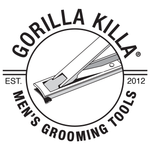After posting “Our Definitive Guide to Nose Hair Grooming” it made sense to take a close look at why our ApeX Nose Hair Trimmers are the cutting edge (couldn’t resist) in nose hair groomers. Now without going into the materials we use (spoiler alert, something we will post in the very near future) or proportions of our various trimmers, we thought we would discuss where the rubber meets the road, in the blades.
A little history on serrated blades:
Syracuse resident Joseph Burns is credited with inventing the serrated knife in 1919. The inspiration came to him while using a scallop-edged glass-cutting tool, a design he thought might prove useful for cutting bread.
So, we decided one of the ways we would break away from the pack was to incorporate serrated blades into several of our nose hair trimmers. During manufacturing we quickly realized a serrated blade would add several steps to our process, hence increasing our costs; however this increased cost paid back in dividends:
1) Superior blade sharpness retention many times over straight blades using similar material.
2) Superior Control over straight blades, the scalloping of a serrated blade better hold course hair in place for easier cutting and saving time.
3) Superior for cutting thicker hair, including beard hair.
4) More reliable.
Why do we do all this? So you can have a quiet, dependable, economical and portable trimmer that’s TSA approved and always ready when you need it, that’s why!
Again, remember; “With women, cleanliness is next to godliness” we can’t say that enough.
